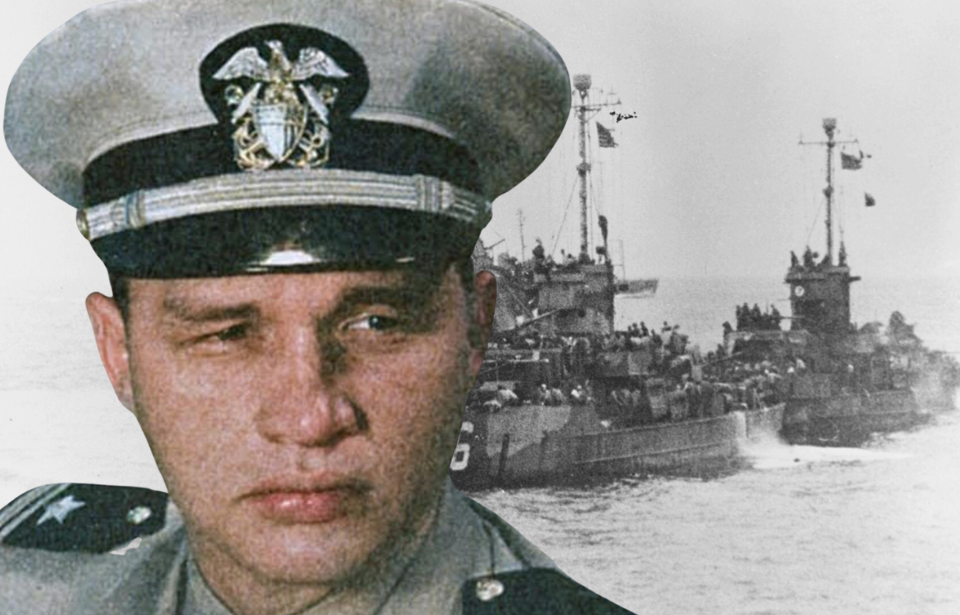Throughout the Second World War, there were countless examples of bravery and heroism that went well beyond the call of duty. Among those to exemplify this was Richard Miles McCool, Jr., a Landing Craft Support ship commander who rallied his crew to save their vessel and comrades, despite suffering severe injuries. His actions afforded McCool the Medal of Honor in 1945, and he most recently became the namesake of the latest San Antonio-class amphibious transport dock ship.
Answering the call to serve following Pearl Harbor
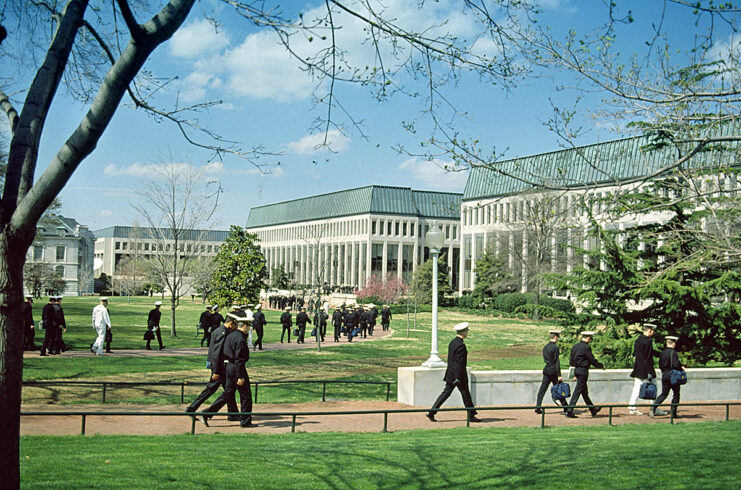
Richard Miles McCool, Jr. was born on January 4, 1922, in Tishomingo, Oklahoma. Graduating from high school at just 15 years old, he went on to earn a Bachelor’s Degree in Political Science from the University of Oklahoma, completing his studies when he was just 19. He’d wanted to pursue work with the foreign service following his studies, but he was considered too young.
Following the Japanese attack on Pearl Harbor on December 7, 1941, McCool applied for and was accepted into the newly-created Naval Reserve Officers’ Training Corps (ROTC) program. He later attended the US Naval Academy, where he volunteered for the Amphibious Force. Like many, he’d initially wanted to be an aviator, but his eyesight prevented him from getting in the cockpit of an aircraft. He graduated in 1944, with the rank of ensign.
After completing training at Naval Air Station Jacksonville, McCool underwent further training at Naval Amphibious Training Base Solomons. By December 1944, he’d assumed command of the USS LCS(L)(3)-122, a Landing Craft Support ship, and was promoted to lieutenant in January ’45.
Rescuing the crew of the USS William D. Porter (DD-579)
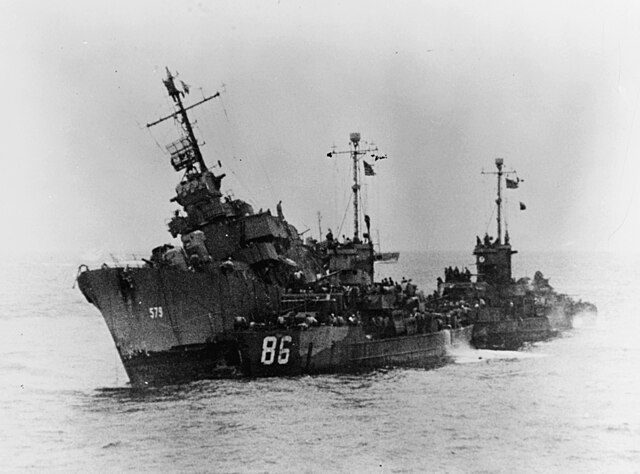
Richard M. McCool, Jr. and his men participated in the Battle of Okinawa, toward the end of World War II. At the time, the US Navy had established 15 radar picket stations around the island, consisting of three destroyers and four Landing Craft Support ships, in an attempt to stop Japanese kamikaze strikes. McCool’s vessel was assigned to one of these stations.
On June 10, 1945, the USS LCS(L)(3)-122‘s was on radar picket duty just north of Okinawa when the USS William D. Porter (DD-579), a nearby Fletcher-class destroyer, was struck by a Japanese kamikaze aircraft. McCool led his crew in rescuing any survivors from the sinking vessel, but it wouldn’t be his only experience with the devastation caused by kamikaze strikes.
Richard M. McCool, Jr. received the Medal of Honor
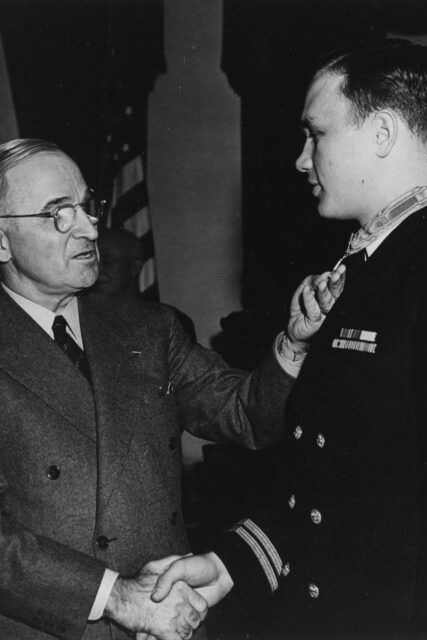
The next day, Richard M. McCool, Jr.’s own ship came under attack from Japanese kamikaze aircraft – two, in fact. His crew shot down one of them, but the second struck the conning tower, engulfing it in flames.
“It came in and hit about 8-10 feet below where I was standing,” McCool recalled. “Instead, it or something from the plane went through the radio stack and out the side of the ship on the other side and exploded, apparently just as it was entering the water.”
Despite suffering severe burns and shrapnel wounds, McCool, having been briefly knocked unconscious, led his men through firefighting and rescue efforts. Given the blow he’d suffered, the lieutenant didn’t remember much of what occurred, but he’d done enough to save countless lives and prevent further damage to the USS LCS(L)(3)-122; only 11 deaths were reported.
For his actions that day, McCool was awarded the Medal of Honor by US President Harry S. Truman. However, he initially didn’t think he deserved the recognition, believing the stories of his heroics had been exaggerated.
“As far as the heroics I was credited with doing … I wondered for a long time if maybe this thing had gotten exaggerated somehow or another,” he said in the early 2000s. “But I’m happy to say that when we started having these reunions of people who served in that type of ship, they confirmed that it was in fact people from the ship who had originated these accounts.”
Richard M. McCool, Jr.’s post-World War II military service
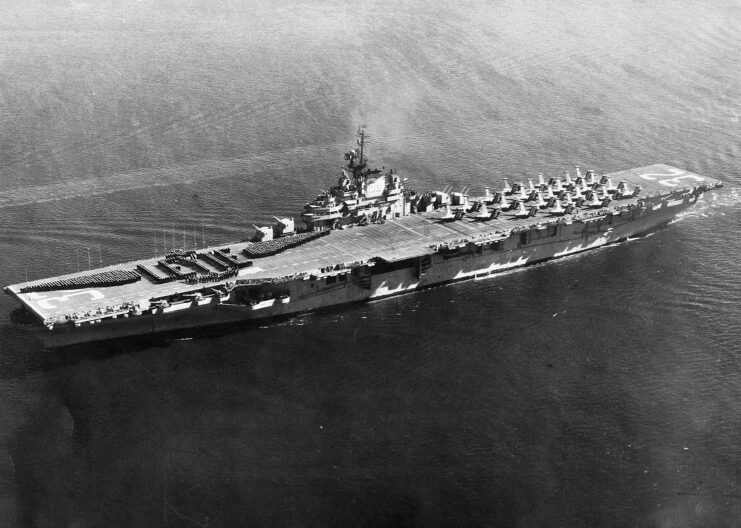
Following what took place off the coast of Okinawa, Richard M. McCool, Jr. spent a year in various hospitals, receiving treatment for his injuries. Once healed, he continued his career with the US Navy. In January 1946, he was reverted to the rank of lieutenant (junior grade), and he went on to command USS LCS(L)(3)-44. He then served aboard the Gearing-class destroyer USS McKean (DD-784).
By July 1947, McCool was working as an aide to the commandant of the Eighth Naval District in New Orleans, Louisiana. His decades-long career also included a stint as an instructor with the Naval Reserve Officers’ Training Corps at the University of Oklahoma, and even saw him serve in the Korean War aboard the aircraft carrier USS Leyte (CV-32).
Throughout the 1950s-60s, McCool held various positions, including public information officer at Long Beach Naval Complex and a staff member of the Southeast Asia Treaty Organization (SEATO) in Bangkok, Thailand, and, later, in Japan. By 1965, he’d risen to the rank of captain.
McCool later served as deputy commander of the Defense Information School at Fort Benjamin Harrison, Indiana, and sat in various public affairs positions before retiring from active duty in 1974.
Post-military life and death
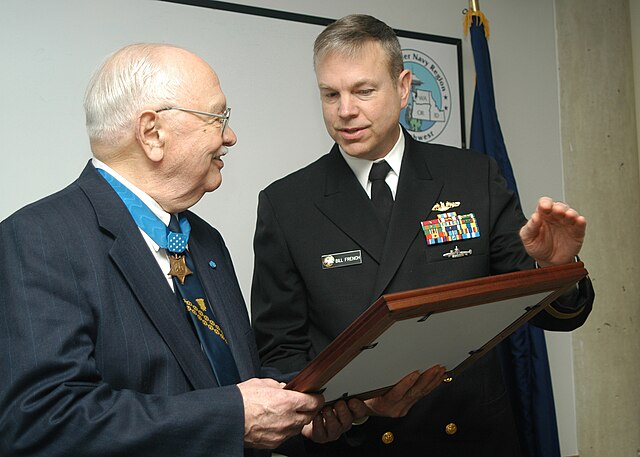
After retiring from the US Navy, Richard M. McCool, Jr. moved to Bremerton, Washington, where he became involved in local politics, serving two terms as chairman of the Kitsap County Democratic Party. He also dedicated his time to various volunteer activities.
McCool passed away of natural causes on March 5, 2008, at the age of 86. He was buried with full military honors at the US Naval Academy Cemetery in Annapolis, Maryland.
USS Richard M. McCool Jr. (LPD-29)
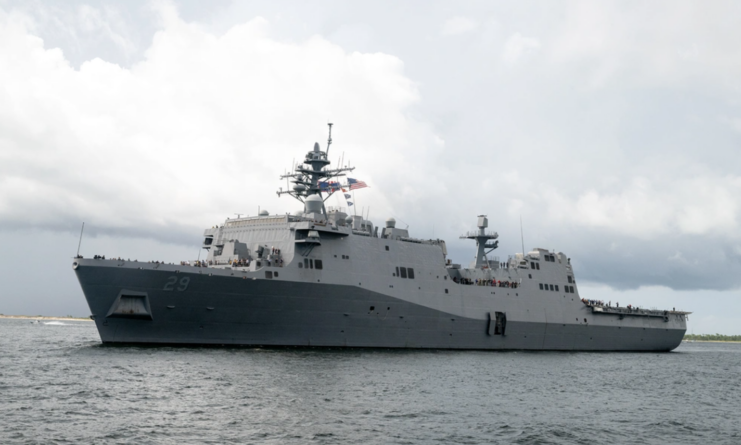
In recognition of his bravery and service, the US Navy named the USS Richard M. McCool Jr. (LPD-29) in Richard M. McCool, Jr.’s honor. The 13th San Antonio-class amphibious transport dock ship was constructed by Ingalls Shipbuilding in Pascagoula, Mississippi, and christened on June 11, 2022, by the late veteran’s granddaughters, Shana McCool and Kate Oja.
Richard M. McCool Jr. was formally delivered to the Navy on April 11, 2024, and commissioned at Naval Air Station Pensacola on September 7 of that same year. The ship’s motto, “Fight as a unit, not as individuals,” reflects McCool’s own leadership philosophy and the unity he embodied.
“I hope that we’ve made him proud,” Commanding Officer Capt. Jeff Baker said at the commissioning ceremony. “I hope that we have lived up to and will continue to honor his legacy.”
As a transitional vessel between the current San Antonio-class Flight I design and future Flight II vessels, Richard M. McCool incorporates several design improvements aimed at both enhancing operational efficiency and reducing costs.
More from us: The Touching Story of the Letter Jimmy Stewart Read Before Every Bombing Mission
Are you a fan of all things ships and submarines? If so, subscribe to our Daily Warships newsletter!
“LPD 29, Richard M. McCool, when deployed comes equipped with the most advanced weapons system ever produced,” Baker explained. “The weapons system with unlimited reach, lethality, and combat effectiveness. The only system known to mankind that cannot be defeated by any adversary anywhere in the world. The system of the United States Marine Corps.”
